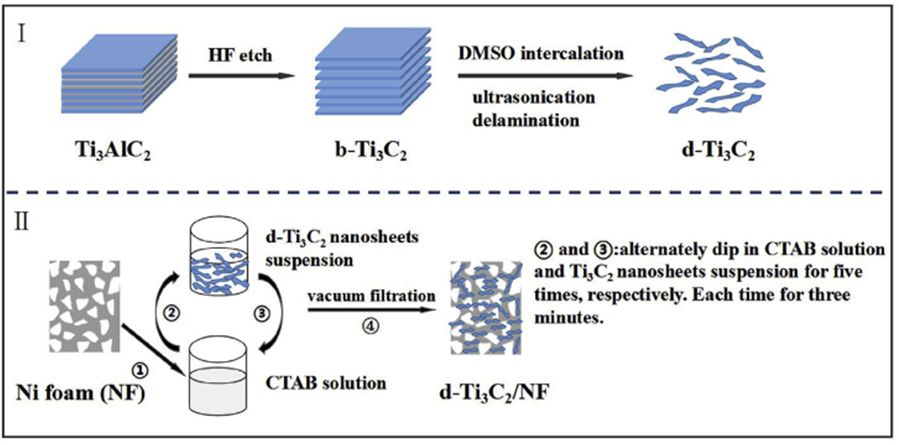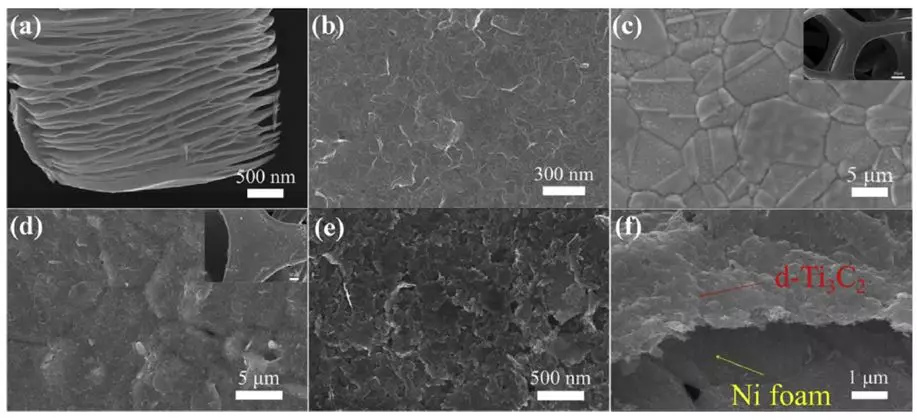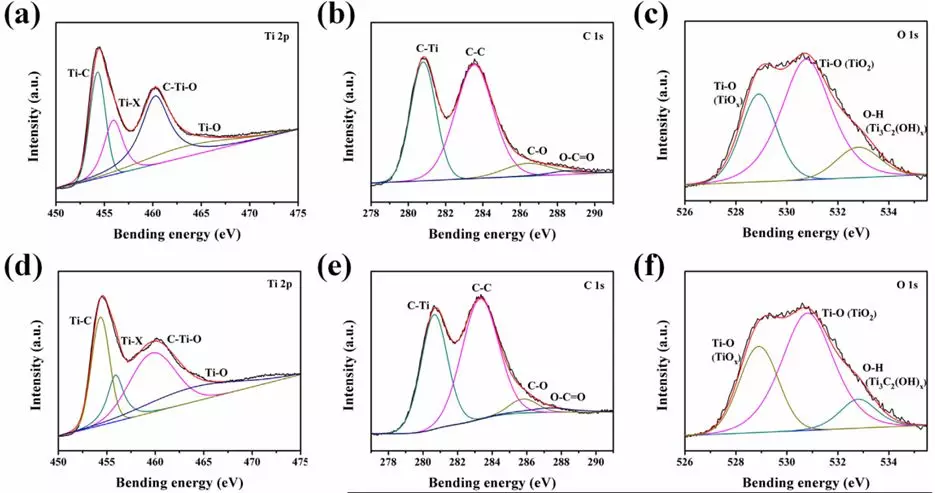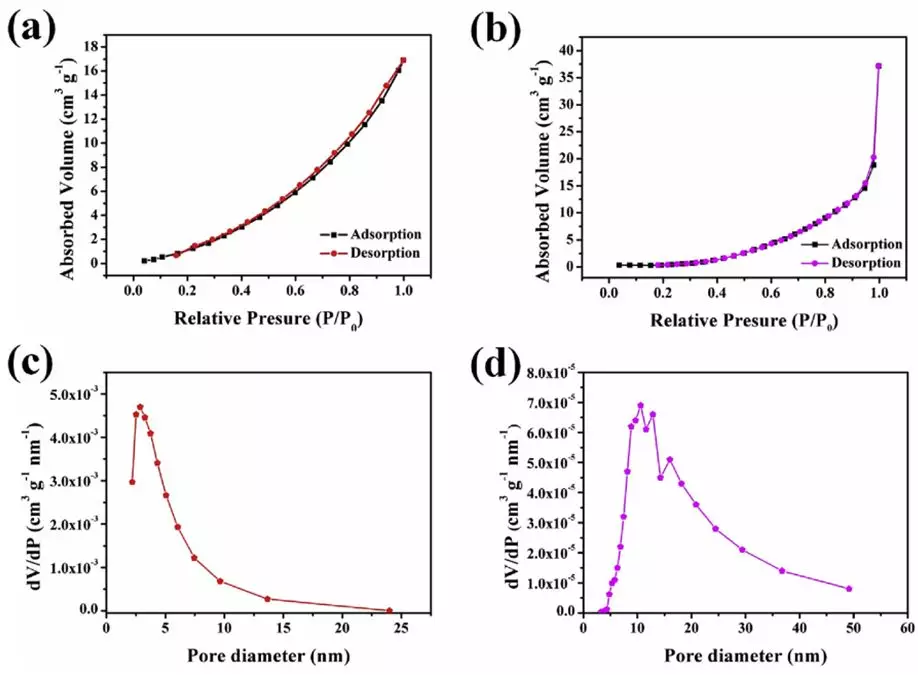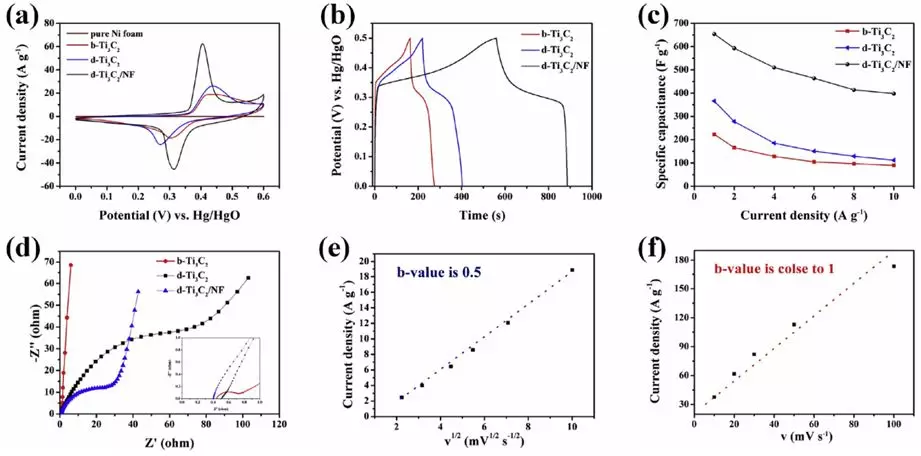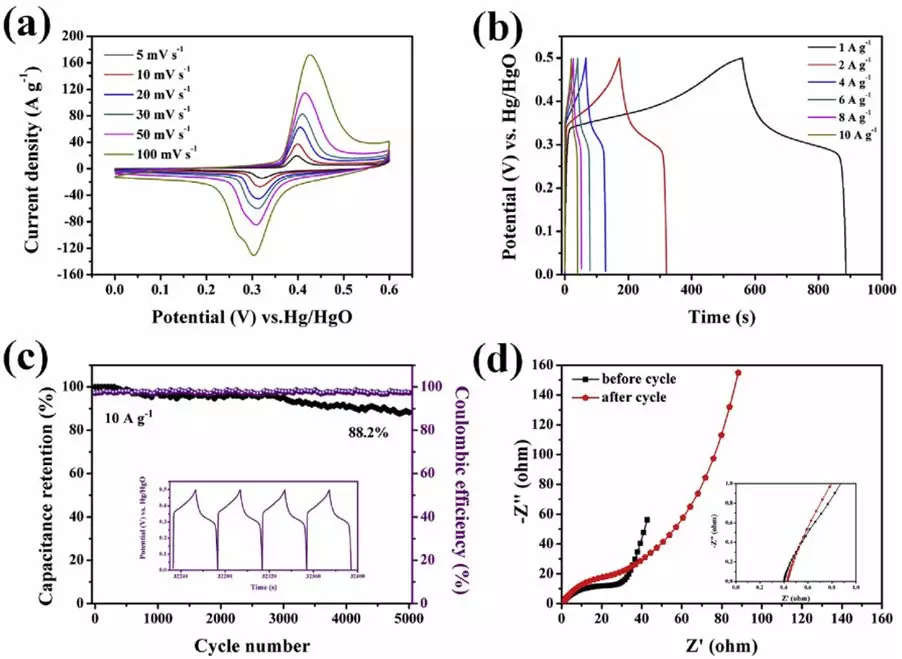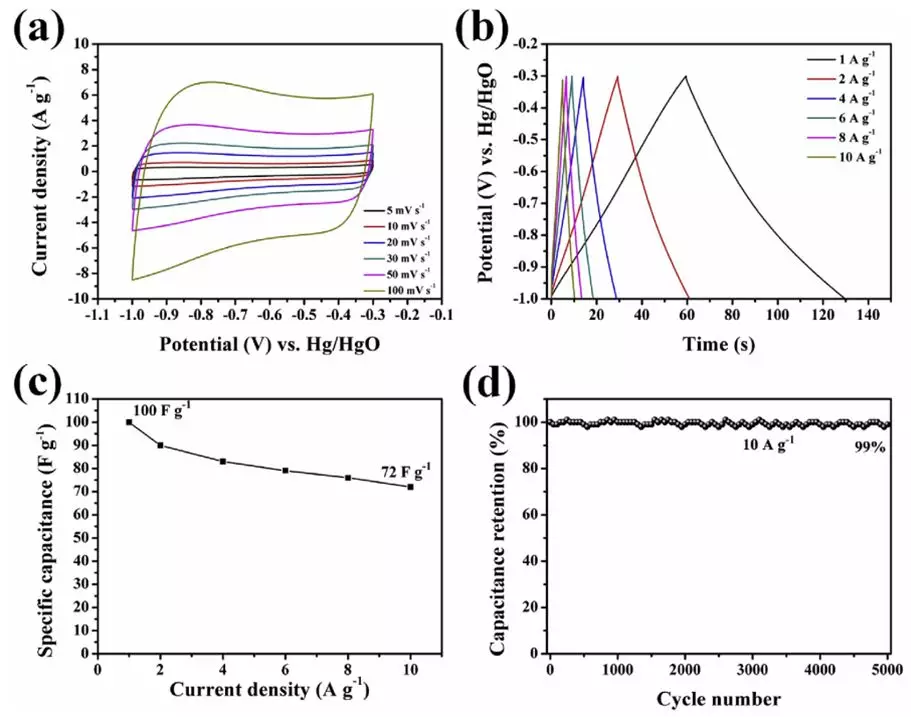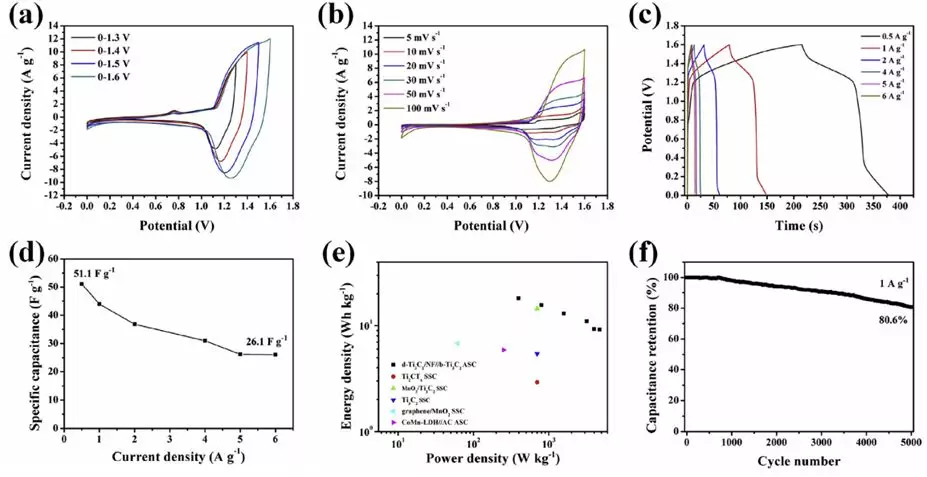
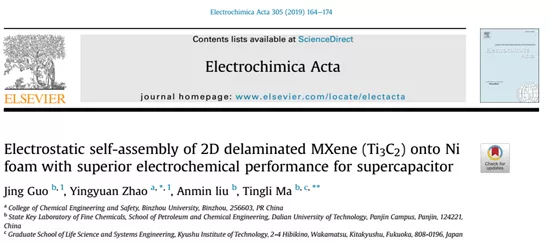
【Research Background】
With the gradual depletion of renewable energy sources, the development of energy storage and conversion devices has become a key issue and has been extensively studied. Supercapacitors are an effective electrochemical energy storage device due to their high power density, long cycle life, and fast charge / discharge rates. However, its relatively low energy density has limited its practical application. In order to achieve high-performance supercapacitors, finding the right electrode material is a key factor. In recent years, a new type of two-dimensional material (MXenes) has received increasing attention due to its high performance. The presence of oxygen-containing functional groups on the surface of MXene makes it a potential electrode material in supercapacitors based on redox mechanisms. However, the irreversible accumulation of MXene will lead to insufficient utilization of these functional groups.
[Achievement Profile]
Recently, Professor Yingyuan Zhao of Binzhou University and Dalian University of Technology in collaboration with Professor Ma Tingli of Kyushu Institute of Technology published a title on the internationally renowned academic journal Electrochimica Acta: Electrostatic self-assembly of 2D delaminated MXene (Ti3C2) onto Ni foam with superior electrochemical A research paper on performance for supercapacitor. This research prepared a composite electrode composed of 2D layered Ti3C2 nanosheets (d-Ti3C2) and 3D foamed Ni (NF) through electrostatic self-assembly. In this electrode, d-Ti3C2 nanosheets are adsorbed on the surface of the 3D foamed Ni framework structure, thereby eliminating the need for an insulating polymer binder. The self-assembly strategy makes d-Ti3C2 / NF composites have a unique 2D / 3D structure, which has the advantages of good conductivity, many active sites, high charge transfer efficiency, and short ion diffusion paths.
[Picture and text guide]
Figure 1. Schematic diagram of (I) preparation of d-Ti3C2 nanosheets and (II) d-Ti3C2 / NF composites
Figure 2. (a) XRD patterns of Ti3AlC2, b-Ti3C2 and d-Ti3C2 nanosheets and (b) d-Ti3C2 / NF composites (c) is an enlarged view of (b)
Figure 3. (a) b-Ti3C2 (side view) and (b) d-Ti3C2 nanosheets (top view) (c) bare nickel foam and (d) d-Ti3C2 / NF (top view) (e) d-Ti3C2 / Enlarged image of NF (top view) and (f) cross section of d-Ti3C2 / NF
Figure 4.High-resolution XPS spectra (a)-(c) of b-Ti3C2 and high-resolution XPS spectra (d)-(f) of d-Ti3C2 nanosheets.
Figure 5. Nitrogen adsorption-desorption isotherms: (a) b-Ti3C2 and (b) d-Ti3C2 / NF; pore size distribution curves: (a) b-Ti3C2 and (b) d-Ti3C2 / NF
Figure 6. (a) CV curve of pure foamed nickel, b-Ti3C2 (NF), d-Ti3C2 (NF) and d-Ti3C2 / NF at 20mV s-1 (b) GCD curve at 1 A g-1 (C) Specific capacitance at different current densities (d) Nyquist diagram (e) b-Ti3C2 (NF) electrode b value determination (i vs. v1 / 2), R square = 0.9989 and (f) d-Ti3C2 / NF composite electrode (ivs. v), R square = 0.9756
Figure 7. (a) CV curves of d-Ti3C2 / NF at different scan rates. (B) GCD curves of d-Ti3C2 / NF at different current densities. (C) d-Ti3C2 / NF at 10 A g-1. Cycle performance and Coulomb efficiency (d) Nyquist diagram of d-Ti3C2 / NF electrode before and after cycle stability test
Figure 8. (a) CV curve and (b) GCD curve of b-Ti3C2 as negative electrode at different current densities (c) Specific capacitance of b-Ti3C2 at different current densities (d) b-Ti3C2 as negative electrode at 10 Ag Cycle performance at -1
Figure 9. Electrochemical performance of d-Ti3C2 / NF // b-Ti3C2 asymmetric supercapacitor
[Summary of this article]
In this paper, d-Ti3C2 / NF composites were synthesized by positive and negative charge electrostatic attraction and self-assembly methods. The oxygen-containing functional groups on the surface of MXene make it a potential supercapacitor / capacitor electrode. The prepared composite material can be directly used as a positive electrode without a binder and other additives. Used as a positive electrode material with excellent electrochemical energy storage performance, the maximum specific capacitance at 1 Ag-1 is 654 F g-1, and the cycle stability is good. The d-Ti3C2 nanosheets have high electrical conductivity. Contacting the d-Ti3C2 nanosheets directly with nickel foam helps the rapid transfer of electrons and leads to high specific capacitance. d-Ti3C2 / NF // b-Ti3C2 ASC has a maximum energy density and power density of 18.1 Whkg-1 (397.8 W kg-1) and 4731.4W kg-1 (9.2 Wh kg-1), indicating its potential application prospects , Can be used as a power source for hybrid cars. In addition, ASC showed excellent stability (80.6% after 5000 cycles). These results indicate that d-Ti3C2 nanosheets will provide new ideas for the development of composite energy storage devices based on d-Ti3C2 nanosheets.
Literature link:
https://doi.org/10.1016/j.electacta.2019.03.025
Source: MXene Frontier



